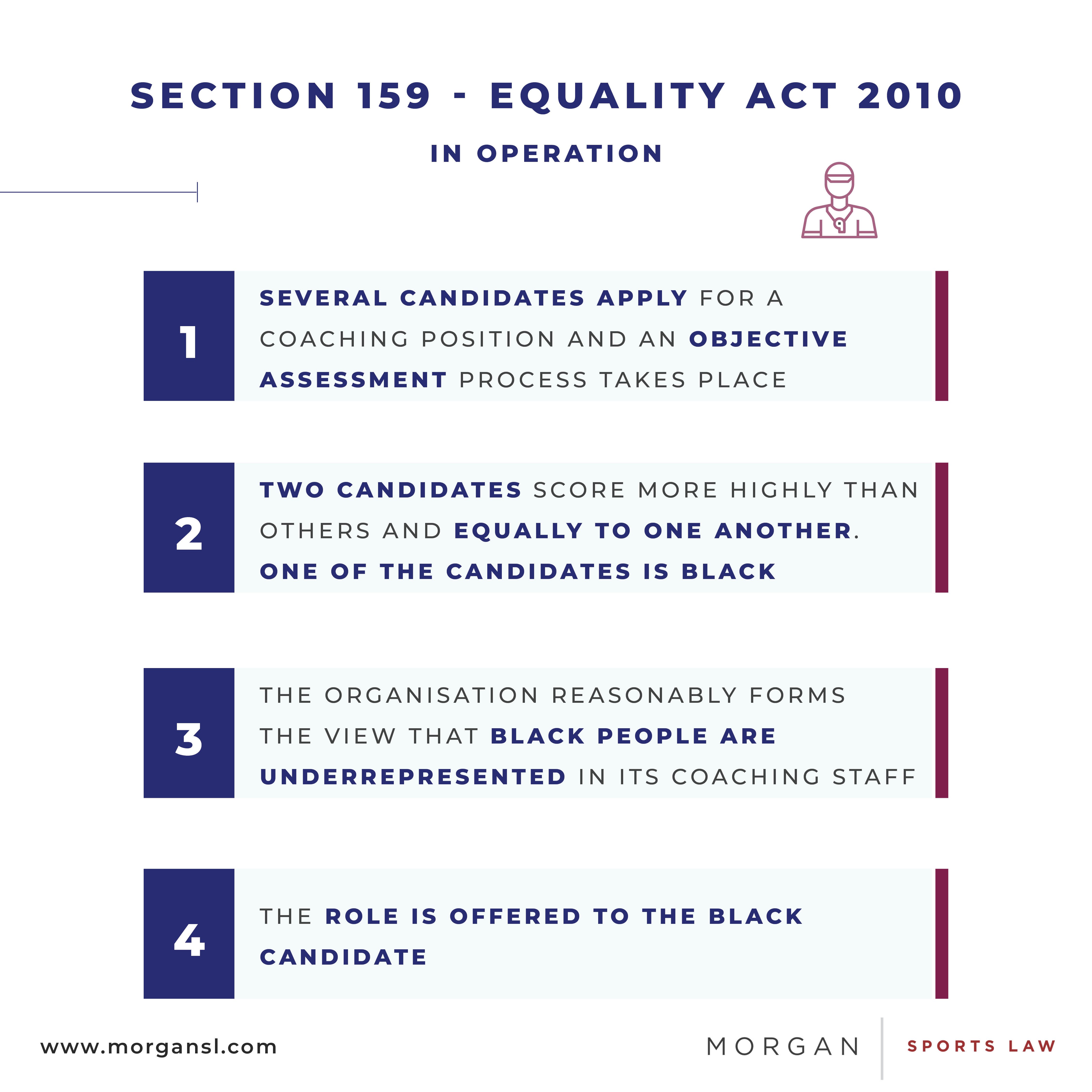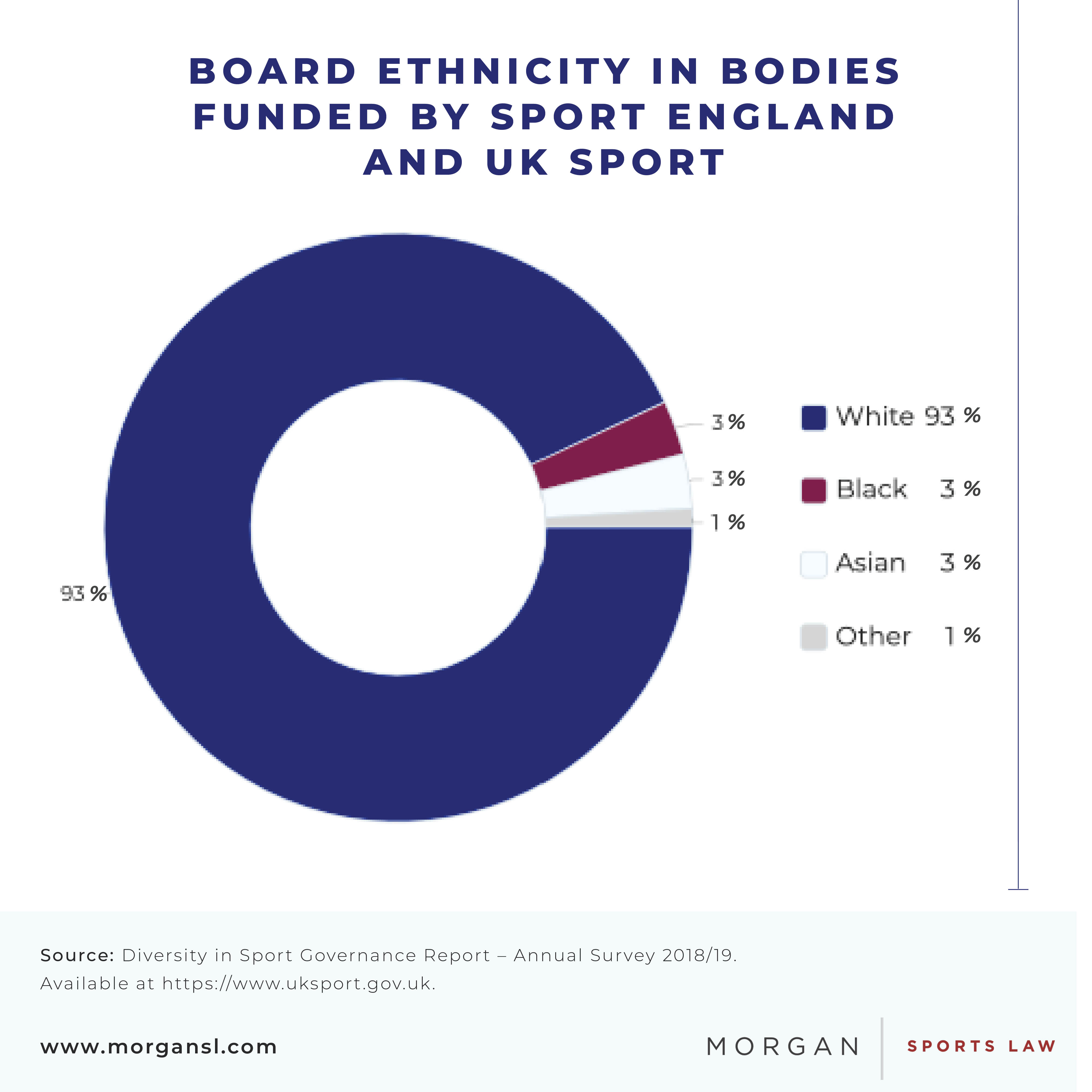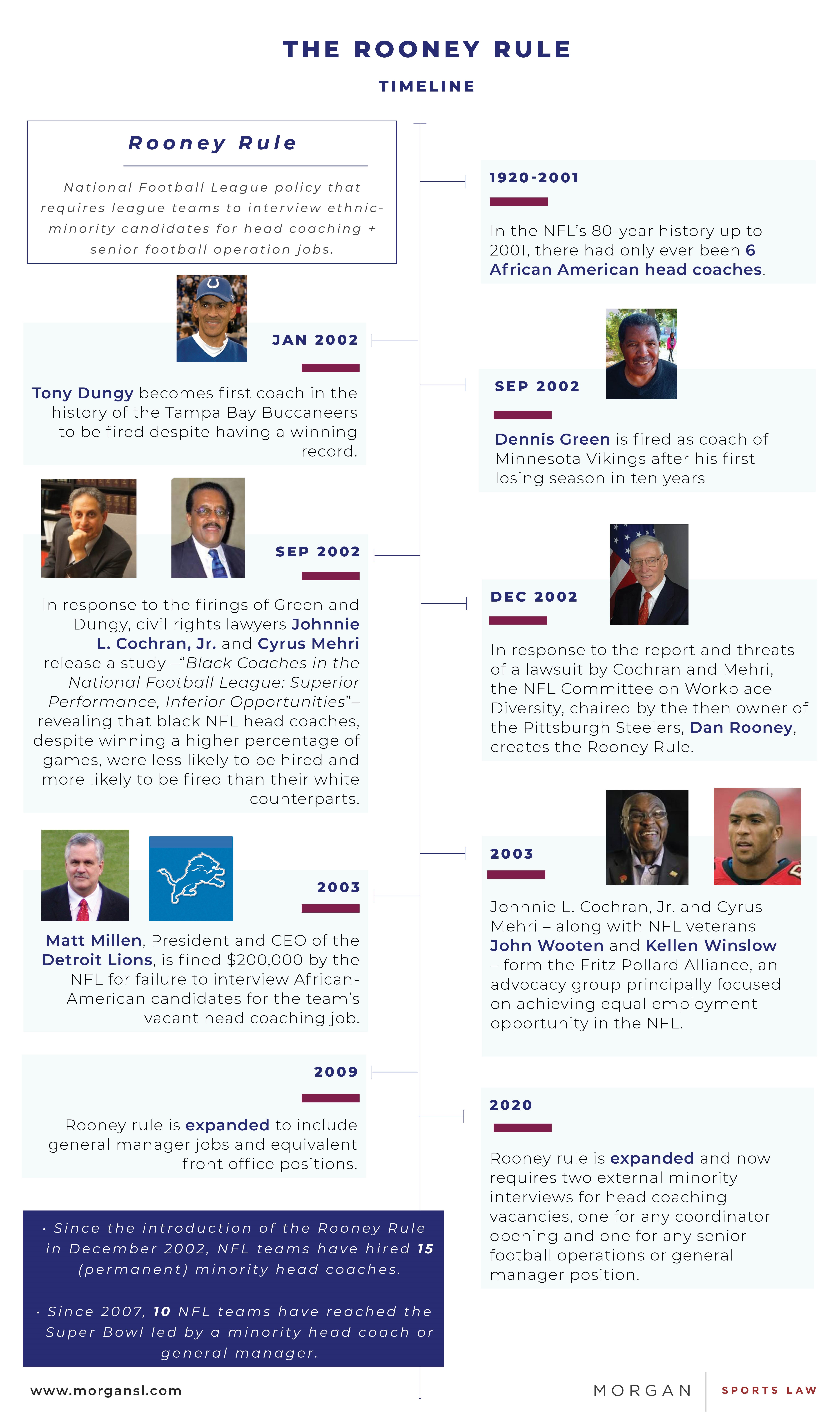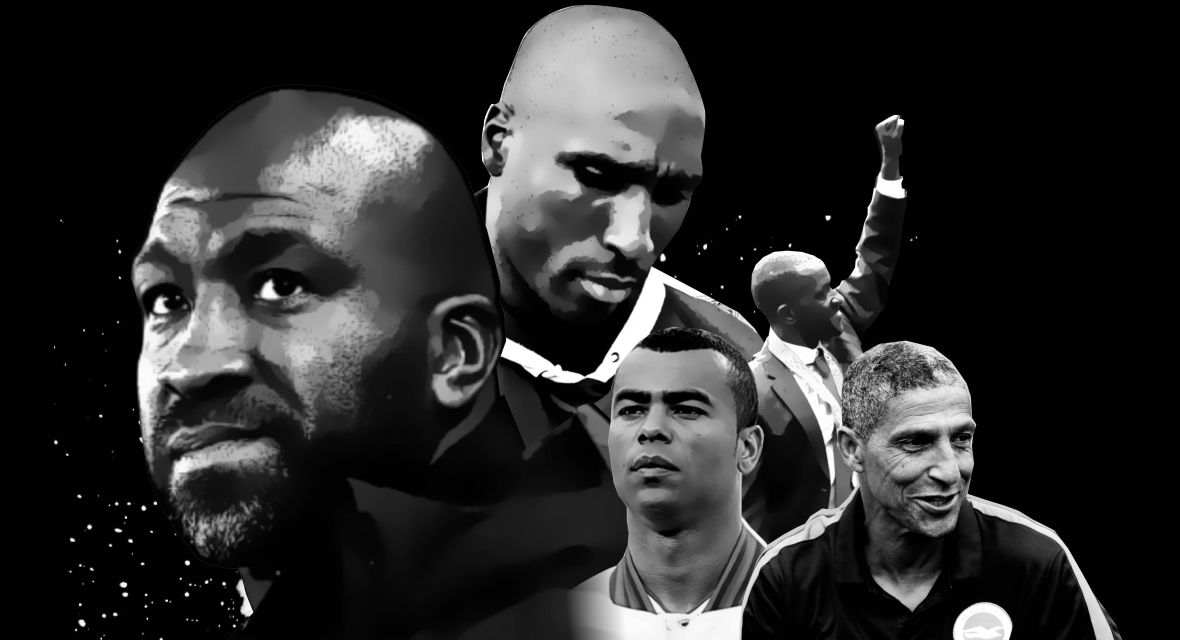Levelling the Playing Field
Introduction
As in many other parts of the world, social and racial inequalities are engrained in British society. Our sporting institutions are not exempt from that. A timely reminder of that fact came courtesy of Raheem Sterling’s recent observations about the lack of black representation in club hierarchies, and the difficulty black players face finding coaching and managerial roles when they stop playing. For example, whilst Steven Gerrard and Frank Lampard have quickly transitioned into managerial roles at topflight clubs following their retirements, things have been less straightforward for Sol Campbell despite his hugely decorated playing career.
It is to be hoped that the recent outpouring of support for racial equality following the senseless killing of George Floyd now carries through into meaningful action. UK-based sports organisations that are serious about playing their part could begin by making use of the sorely underused positive action provisions contained in sections 158 and 159 of the Equality Act 2010 (“the EqA”).
This article briefly explains those provisions, and how they might be applied in the sports industry.
The EqA
The fundamental purpose of the EqA is to protect people from unfair and unjust treatment on the grounds of a ‘protected characteristic’. One such characteristic is race.
The EqA’s protections apply to everyone, though naturally they are required most by those that are most frequently treated unequally. They apply in various spheres including work, education, and the provision of services. It prohibits, amongst other things: direct discrimination, indirect discrimination, victimisation, and harassment related to a protected characteristic. For the purpose of this article, the most important protection is the prohibition against direct discrimination.
Direct discrimination & the ‘Rooney Rule’
Direct discrimination occurs when a person (A) treats another (B) less favorably than A treats or would treat others, because of a protected characteristic. Crucially, it has the effect of prohibiting ‘positive discrimination’ – i.e. treating someone more favourably than others because of a protected characteristic, to the exclusion of others who do not share it.
This could include, for example, the NFL’s ‘Rooney Rule’, which mandates that, save for some very narrow exceptions, at least one BAME applicant must be interviewed for senior coaching and operational roles. It is unclear whether such a rule would be lawful under the EqA, because it could operate to the disadvantage of equally qualified white candidates who were not interviewed.
Nonetheless, the English Football League (“EFL”) has recently made it a policy that clubs must invite to interview at least one BAME candidate when searching for a new first-team manager, provided a BAME candidate applies. By not imposing an absolute requirement to interview a BAME candidate, the policy is more subtle in effect than the ‘Rooney Rule’.
![200707 Protective Actions 3].jpg](/application/files/7015/9412/5155/200707_Protective_Actions_3.jpg)
The positive action provisions
In short:
- Section 158 of the EqA applies in a number of situations, including where someone reasonably thinks that participation in an activity by persons who share a protected characteristic is disproportionately low. If that is the case, then a person may take any action which is a proportionate means of achieving the aim of enabling or encouraging persons who share the protected characteristic to participate in that activity.
- Section 158 does not, however, apply in the context of recruitment or promotion. For that one has to instead look to section 159. Similarly to section 158, it applies when an employer reasonably thinks that people with a protected characteristic suffer a disadvantage connected with it, or participation by persons with a protected characteristic is disproportionately low. In those circumstances, section 159 allows an employer to ‘prefer’ a candidate with a protected characteristic over a candidate without that protected characteristic in a ‘tie-break’ scenario. The employer must reasonably think that recruitment or promotion of someone with the protected characteristic is a proportionate means of enabling people with the protected characteristic to overcome or minimise that disadvantage, or to participate in the activity. It is important to emphasise that the application of section 159 in this way is only lawful when the candidates are of genuinely equal merit and have been subject to an objective assessment that does not favour those with one protected characteristic over another.

Why are these provisions not used more often?
The positive action provisions can appear complex, particularly to non-lawyers. As a result, they are rarely relied upon. The fact that something is hard, however, does not mean that it should not be done. Indeed, it is more vital than ever that sports organisations make use of them wherever possible.
The other reason the positive action provisions are rarely relied upon is that if an organisation gets it wrong, they run the risk of facing a claim that they have engaged in an act of positive discrimination. The way to avoid that problem is to undertake a careful and thorough assessment as to why the measure is necessary and proportionate, and to make sure that such assessment is evidenced.
What should that assessment look like?
Showing that members of a certain group are underrepresented, for example, does not necessarily require sophisticated statistical data or research, although that would be helpful. It may involve looking at the makeup of your club, or consulting with your members. It could also involve looking at national or local surveys that have taken place. The important thing is that there is a reasonable basis (that would stand up to scrutiny) for believing that positive action is necessary, and the measures adopted are an appropriate and proportionate means of achieving a legitimate aim (which means that the same result could not be achieved by a different action that would be less likely to disadvantage other groups).

A sporting body considering making use of the positive action provisions under section 158 (e.g. to increase participation levels) would be well advised to draw up a positive action plan which inter alia:
- Sets out evidence of the disadvantage, particular need and/or disproportionately low levels of participation, as appropriate, and an analysis of the causes;
- Sets out specific outcomes which it is aiming to achieve;
- Identifies possible action to achieve those outcomes;
- Shows an assessment of the proportionality of the proposed action(s);
- Sets out the steps it has decided to take to achieve these aims;
- Sets out the measurable indicators of progress towards those aims, set against a timetable;
- Builds in consultations with members of the relevant protected group(s);
- Builds in periodical reviews of the progress of the measures to ensure they remain proportionate.
Equally, those considering making use of section 159 in a ‘tie-break’ recruitment scenario would be well advised to document their decision making in a similar manner.
How effective has positive action in sport been so far?
Looking solely at the Rooney Rule and the EFL’s equivalent rule on interviewing BAME candidates, the answer is “not very”:
- With respect to the NFL, despite the fact that the vast majority of the league’s players are black, the vast majority of coaches and player personnel executives are white. In 2019, 8 teams filled head coaching vacancies, and only one of those (the Miami Dolphins) hired a BAME candidate.
- The EFL’s rule appears to have been similarly ineffective. Just 4 of the 71 clubs across the EFL have BAME managers (as of the date of publication of this article). It has been alleged that clubs are circumventing the EFL’s rule by not undertaking a shortlisting process and instead just interviewing their desired candidate.
There is evidently a gap between the tools available to level the playing field and the willingness of teams and sports organisations to use those tools. Those teams and sports bodies that are serious about racial equality should bear in mind that their task is not just to hire more BAME candidates, it is to implement programs that will break down structural barriers that have been erected over decades. For example, if implemented correctly, mentoring schemes can have a profound effect. To that end, the Premier League, Professional Footballers Association and EFL have recently announced a pilot placement scheme which will provide six BAME coaches with a 23-month work placement at EFL clubs. Under the scheme, participants will also apparently receive mentoring from the PFA's coaching team.
What kinds of initiatives might my club or sporting institution implement?
What initiatives might be appropriate in any given case is a fact specific question. However, here are three practical examples of how the positive action provisions might be utilised:
- All of the members of a polo club’s junior team are white. The polo club decides to hold an open day and show-match, which will introduce children from underrepresented backgrounds to the game. It advertises the event solely in London boroughs that have large BAME populations. Applying the provisions of section 158, it is likely to be lawful for the club to do this.
- A governing body has a generally diverse workforce, but almost all of its senior management is white. A mentoring scheme is made available to employees from BAME backgrounds with the objective of supporting their progression to management positions. Applying the provisions of section 158, it is likely to be lawful for the governing body to do this.
- Two coaches are interviewed for the same position. Both achieve an equal score according to a set of objective scoring criteria. One of the candidates is black, the other is white. The club identifies that although its membership and player base is diverse, none of its coaches are black. In order to help address this issue, the club decides to appoint the black candidate. Applying the provisions of section 159, it is likely to be lawful for the club to do this.
I am persuaded, what should I do next?
Something that many of us will have been doing, particularly in the last few weeks, is to examine the inequalities that exist around us. Which groups are underrepresented in your organisation? What kinds of things might you do to minimise or remove the apparent inequality? Once you have thought about those questions and challenged the assumptions behind them, you will have taken an important first step.
The second step is to take the measures necessary to make changes. If you are unsure whether what you intend to do is lawful, seek legal advice, but do not be deterred by the challenge. Change can be difficult, but it is essential that changes are made in order to build a fairer and more equal society.

Authored By
Nick Williams
Barrister
Footnote
1. Regulation 116.1 of the EFL Regulations
2. There is a line of ECJ case law to this effect, see: a. Helmut Marshall v. Land Nordrhein Westfallen C-409/95 b. Badeck and Others C-158/97 c. Abrahamsson and Anderson C-407/98
3. Something the Court of Appeal was eager to emphasise in R (on the application of Z) v. London Borough of Hackney & Augdas Israel Housing Association Limited [2019] EWCA Civ 1099
4. The statistics are just as bad if the Premier League is taken into account: as at the date of publication of this article, just 5 of the 91 clubs across the EFL and Premier League have BAME managers.


